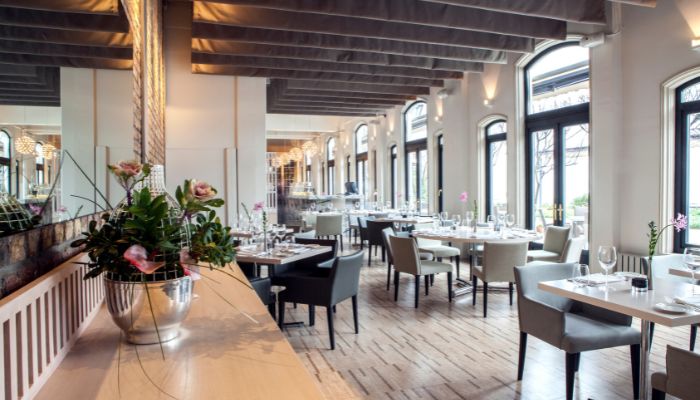Relocating Your Restaurant: 7 Need-to-Know Tips
Relocating your restaurant is a big logistical and emotional challenge. Changing scenery in a highly competitive industry always has some risk, but it can pay off in a major way if you play your cards right.
Here are seven need-to-know tips to make your restaurant relocation a success.
- Find a Profitable Location
Location is critical for any restaurant’s long-term profitability. If you’re seriously contemplating a relocation, you should already have at least one new spot in mind. To find more, you can perform a business location analysis and compare the suitability of multiple sites. Important factors to remember include local demographics, foot traffic and parking availability.
Generally, urban locations that people can comfortably access by car and foot are ideal spots for restaurants. However, these locations are usually nearby other restaurants, so be prepared to face stiff competition. New restaurants on the block must work hard to set themselves apart from established local eateries.
Even if you find a place customers can easily access, you must consider your restaurant’s operations. Are food, beverage and equipment suppliers nearby? What would the daily commute look like for your employees? Are there any unique zoning regulations? Most importantly, does the new location give your restaurant room to grow?
- Choose Whether to Buy or Lease
Once you find a viable location, you must choose whether to buy or lease. Your decision depends on your restaurant’s current situation and the site itself. With commercial property rentals in busy urban sectors getting more expensive due to inflation, buying and renovating a space might be in your best financial interest.
Rental prices aside, buying your location instead of renting gives you complete control over the property’s design and operations. As the owner, you can take practical steps to increase the property value instead of operating under a landlord’s restraints. This option is better for restaurants with an established brand identity that want to avoid another relocation.
Renting on a short-term lease is better if you’re trying to rebrand your restaurant or start from scratch. You might have to relocate again in a few years, so it doesn’t make much sense to buy the property. Renting keeps your options open and doesn’t tie you to one spot.
- Relocate at an Opportune Time
Relocating as soon as possible might seem ideal, but that’s not always true. You should plan to move during your slowest business month to minimize the relocation’s costs. Every restaurant should know their busiest and slowest times of the year. September is the worst sales month for the restaurant industry as a whole, but this trend doesn’t apply to everyone.
The relocation’s date and time will also greatly affect the final price. Moving during any holiday will be more expensive because of increased labor costs, so try to avoid New Year’s, Christmas, Thanksgiving and the Fourth of July. You might have to sacrifice one or two business days to minimize the moving day costs.
- Get Help With the Moving Process
Moving will likely be the most stressful part of your restaurant’s relocation. Transporting everything to the new building yourself — especially fragile items like glassware and expensive machinery — could be costly. Leave the manual labor to professionals so nobody gets hurt, nothing gets damaged and the relocation continues on schedule.
Besides, you still have a business to run. You can’t drop everything and lead the moving process. The pros can move your precious cargo with special tools and tracking systems to reduce worker injury while you take care of your restaurant’s other operations.
- Implement Relevant Upgrades
Your relocation is a fantastic opportunity to introduce trendy, relevant upgrades to your restaurant’s operations. A new interior design scheme might be in order. You could invest in new innovative service gadgets to simplify your employees’ jobs and heighten the customer experience.
You could also institute new sustainability initiatives that weren’t possible at your old location — namely delivery and take-out services. These offerings have been booming since COVID-19. According to a 2022 study by Deliverect, 43% of surveyed customers said they would pay more for sustainable take-out options.
Other relevant sustainability initiatives include energy-efficient appliances, smart thermostats with automatic climate control and waste reduction programs. More restaurants are growing their own food to reduce vehicle emissions and packaging waste.
- Connect with the New Community
Winning over new customers is your top priority once the relocation is complete. The other restaurants in the area have established connections, so you need to set your business apart. Start by learning about local demographics and community traditions. Absorb as much knowledge from long-time residents as possible, whether in person or online.
You also need to change your website to fit your location. Don’t just change your contact info — give your website a fresh design that reflects your new home. Use your online presence to get involved with local food festivals and other events. Show that you can bring friendly service and delicious food to the neighborhood. The more exposure, the better.
- Keep Existing Customers Engaged
Even though you’re focusing on building relationships in your new community, you can’t forget about your existing customers. They deserve your attention for staying loyal after your relocation. Give your regular customers discount coupons, BOGO offers and other incentives to show your appreciation for their continued patronage.
You could get the best of both worlds by hosting an event to celebrate your established customer base and introduce your restaurant to the neighborhood. Both groups can mingle under your brand and everyone feels equally welcome.
Make Your Relocation a Success
Relocating is never easy, whether moving to a new house or commercial building. These seven tips will lighten the stress and help your relocation go as smoothly as possible. However, regardless of your new spot’s success, always remember where you came from. Your original location should always have a special place in your heart.



Comments are closed.